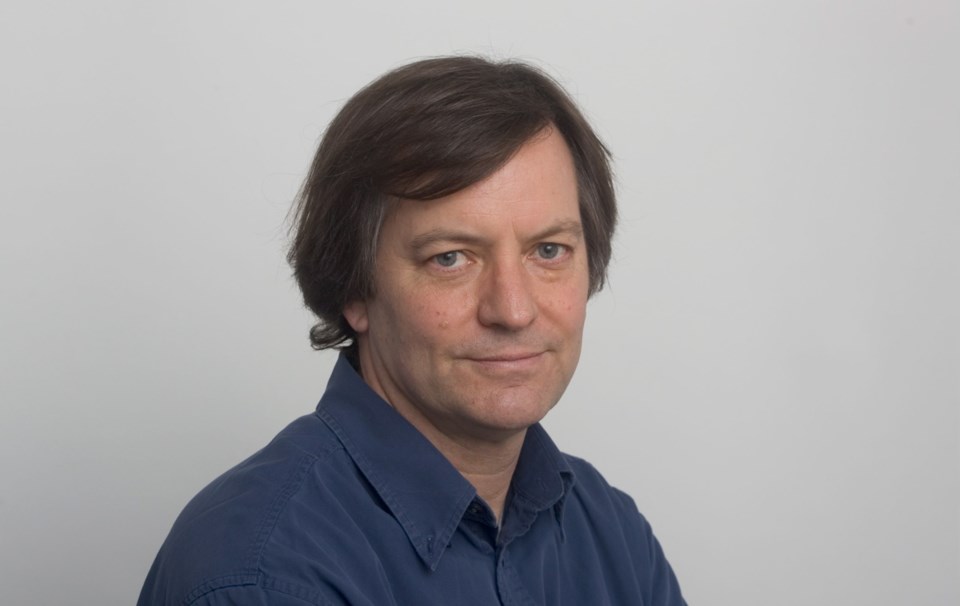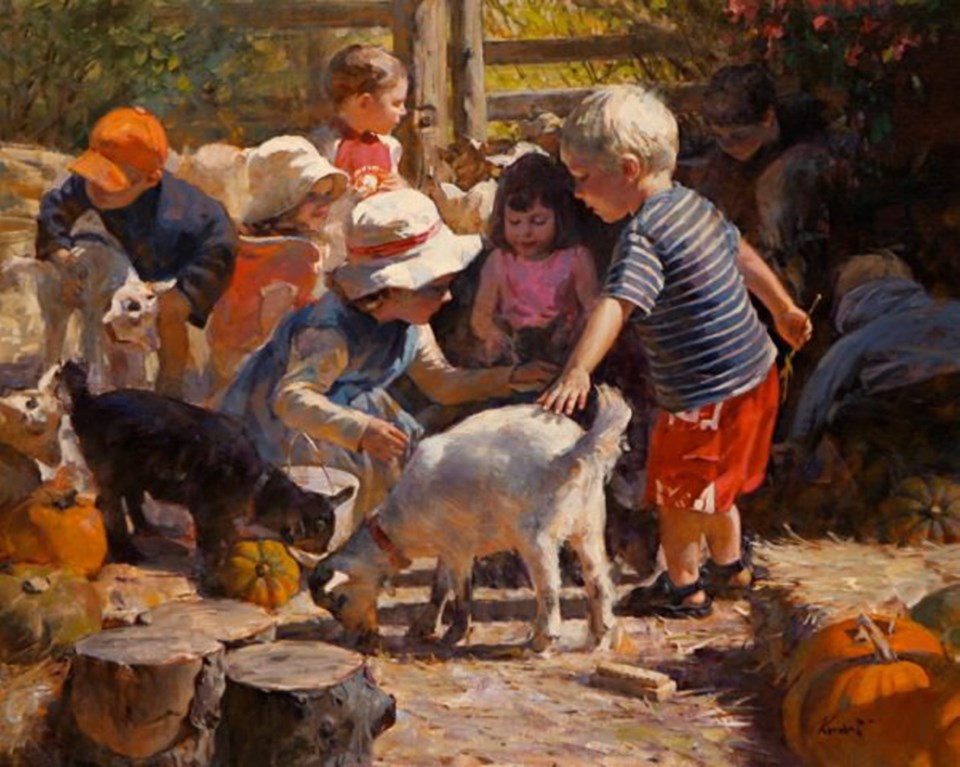 Clement Kwan is a talented painter. His work has been a regular feature of the Sidney Fine Arts Show and the Sooke show. The entrance to his studio is festooned with ribbons, and many of them are the coveted People’s Choice Awards, an accolade he values highly.
Clement Kwan is a talented painter. His work has been a regular feature of the Sidney Fine Arts Show and the Sooke show. The entrance to his studio is festooned with ribbons, and many of them are the coveted People’s Choice Awards, an accolade he values highly.
Kwan’s detailed paintings are in demand, so he never has enough of them at one time to present a one-man show. He is represented by a gallery in Texas and by the Stephen Lowe Gallery in Calgary; locally, the best chance to view his originals is at the Peninsula Gallery in Sidney (100-506 Beacon Ave., 250-655-1282).
Rather than wait for an exhibition, I called him up and visited his studio. Kwan has lived in Victoria with his wife and family in a trim suburban home for years, and we sat in the living room, drinking tea and enjoying a few paintings on easels there.
“My living room is my studio,” he offered. A lot of any artist’s work is done by looking. Though these paintings showed a high degree of finish, Kwan was still considering tiny adjustments.
There were paintings of his daughter’s ballet class, of belly dancers, of a high school graduation and of “fancy dancers” from the Brentwood Bay powwow.
“My life on Vancouver island — that’s my basic direction,” Kwan told me. “You have to paint a subject you know; otherwise, it won’t work.” His style can be described as Impressionism and Realism combined.
The paintings are figurative — in fact, they centre on portraits of a group of people who are seen in complex and extensive settings. His style runs from a tight photographic realism in the faces to a bravura expressionism toward the margins. Among his inspirations, he mentioned the later impressionism of John Singer Sargent and the virtuoso paintings of Joaquin Sorolla.
This European influence might seem surprising, as Kwan was born and educated in South China and lived there until coming to sa���ʴ�ý about 30 years ago.
Kwan had his fundamental art education in China. Due to the political realities of the time, “American art was no good, and neither was European art. We learned from Russia, and they sent teachers to China.”
The teachers brought Socialist Realism, a mid-century evolution of the French Beaux-Arts Academic style as socialist propaganda. Despite China’s ancient tradition of ink painting, from the 1950s to the 1980s, Socialist Realism oil painting was the only acceptable style.
“If you don’t do that style, you won’t get in the papers or magazines,” he told me. “Same for school examination. With any other style, art school would be impossible.”
His childhood friend, artist Mian Situ, came to sa���ʴ�ý before him, and established a brilliant career based on the solid academic art education they shared. Kwan appreciated the education, but as soon as he arrived in the “new world” he revelled in the freedom to paint in any style he chose.
The books in the public library here, and the attitudes of the local artists he met, were thrilling to Kwan. At first he worked in a factory, but the past 10 years have been devoted to painting.
A cheerful 60-year-old, Kwan bubbles with ready laughter. He regularly enjoys the company of a group of plein-air painters, including Adam Noonan and Ken Faulks, and every week attends a life-drawing session.
His “signature” membership in the Federation of Canadian Artists has helped his career in a variety of ways.
At my insistence, Kwan led me to the garage/studio where a corner of the two-car garage is given over to an ergonomically intense work station. Though the space is small, he told me, his imagination is large.
Kwan has built a wall-mounted easel, a sort of rack with movable shelves rigged to slide the picture up and down. To the left is his computer monitor.
“People ask if I use photos as a reference. If I don’t use photos, what would I use?” he wondered. “If you paint from your imagination, eventually you’ll just paint every figure the same. Using a photo, you can make it different … And it’s so much easier.”
With his family and friends as models, he photographs the elements he needs, and then adjusts the image with PhotoShop. He prints up the result and paints out the background with gouache, an opaque watercolour. Kwan then begins assembling the components into a composition.
Today he’s painting the RCMP Musical Ride. His palette is a sheet of glass, with hills of colours in neat order around the edge. This palette is for oil paint, though he is making a transition to acrylic paint. Though he’s glad to be rid of the solvents, it’s mostly because of the quick drying, which allows him to be more productive.
For subject matter, Kwan is dedicated to beauty. He finds this in the expressiveness of musicians, the innocent looks of children and the rhythmic figures of women dancing. His special ability to convey the brilliance of sunshine, and its reflected light in the shadows, are trademarks of Clement Kwan.
“I am a painter of light,” he confessed. “Everybody likes light. And I exaggerate it a little bit. I’m 60 years old now, so I can do whatever I like.”
With a hard-won technique, a supportive community and a positive attitude, he certainly can.



